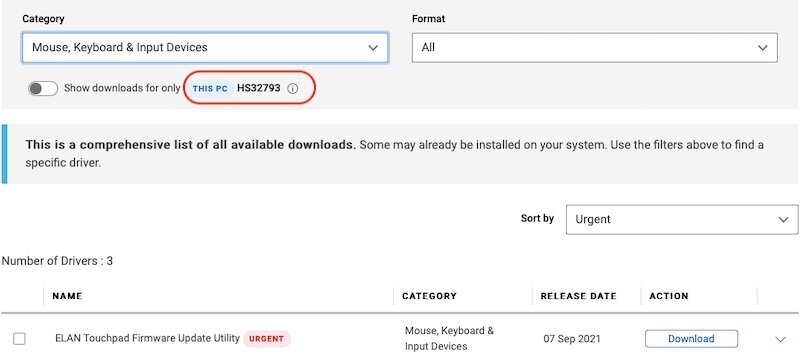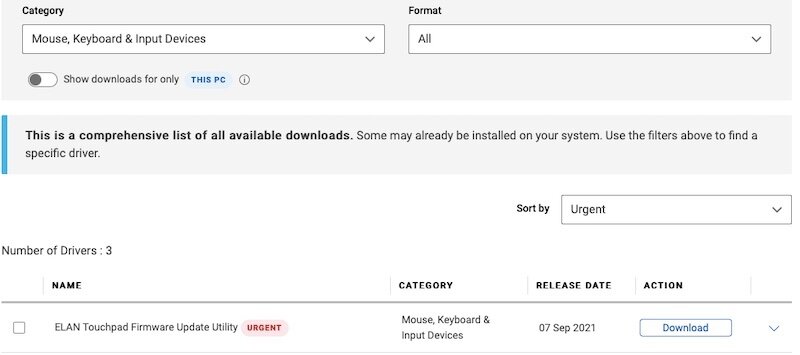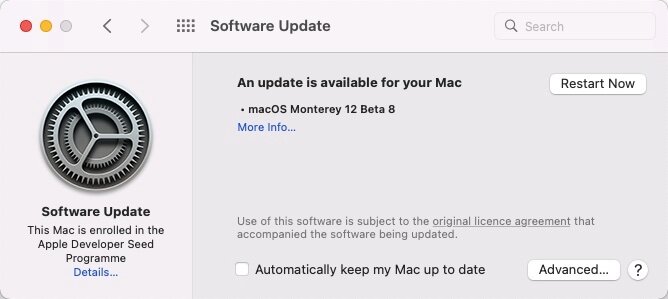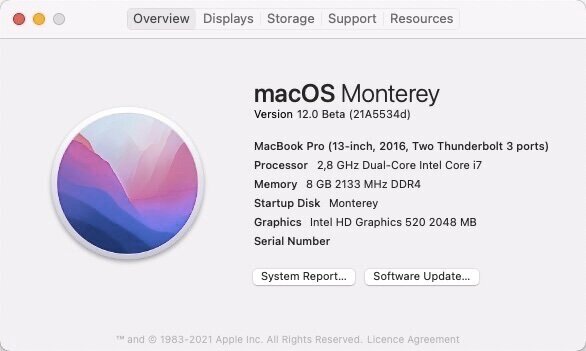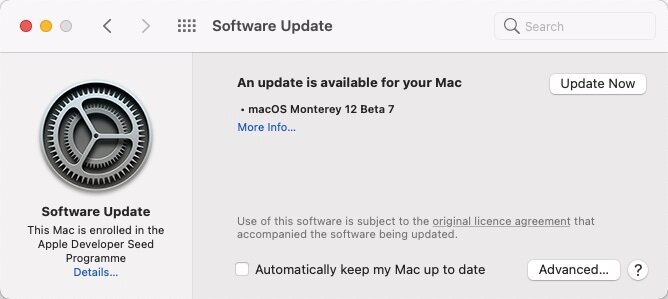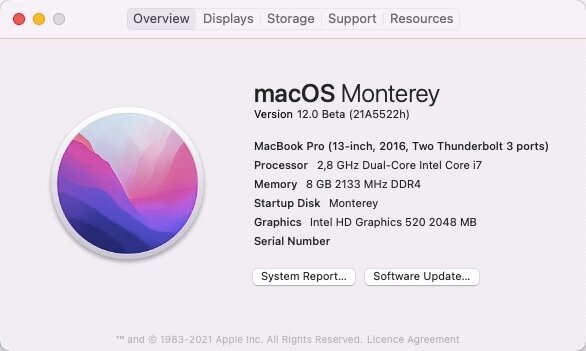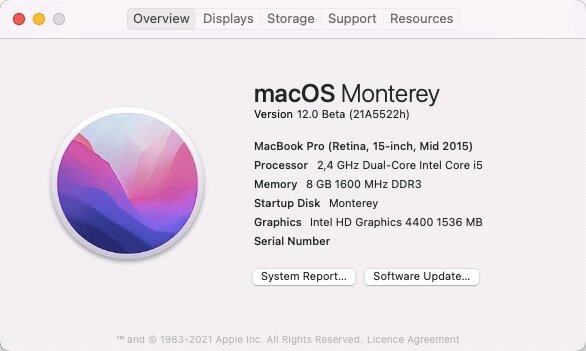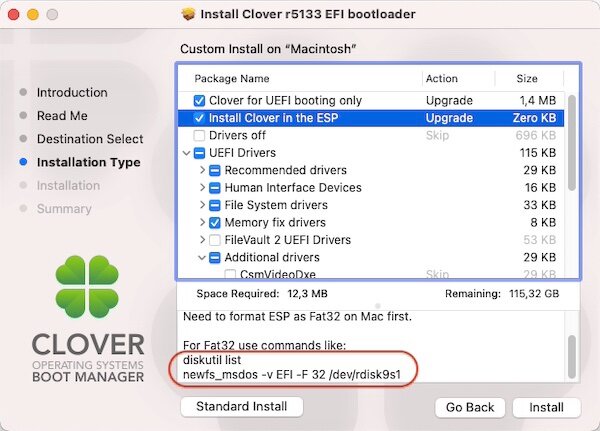-
Posts
10067 -
Joined
-
Last visited
-
Days Won
569
Content Type
Profiles
Articles, News and Tips
Forums
Everything posted by Hervé
-
-
Erm... According to the Dell support web site, this XPS 15 9500 laptop is fitted with an ELAN touchpad: https://www.dell.com/support/home/en-us/product-support/product/xps-15-9500-laptop/drivers
-
When I asked about the model of NVME SSD, I meant make and model, not its physical form (and all NVME SSDs are of course M.2). So identify it, open the laptop and look at the label on the SSD if necessary.
-
What's the model of NVME SSD? Some are not supported.
-
What are the other specs? Wifi? Disk?
-
8th beta released September 28th, 2021. Build 21A5534d. As per beta7, I had to temporarily use SMBIOS iMac17,1 to complete the upgrade and avoid the boot loop problem. Other than that, all Ok on my Latitude E7270 (Clover r5133) and Toshiba Satellite R50-B (OC 0.7.0).
-
https://osxlatitude.com/forums/topic/16757-solved-opencore-gui-not-showing/?tab=comments#comment-111632
-

Dell Vostro 5568: DRM fix for Netflix + AppleTV under Catalina?
Hervé replied to talrhv's topic in The Archive
-
It depends entirely on the configuration parameters you're using. Monterey does not natively/officially support HD4000 graphics and Ivy Bridge platforms were dropped. As such, you have to adjust your config with a supported SMBIOS and you'll subsequently have to apply patching to obtain support for HD4000 graphics. Can't say more without more info from you at this stage.
-

Dell Vostro 5568: DRM fix for Netflix + AppleTV under Catalina?
Hervé replied to talrhv's topic in The Archive
No DRM fix for Netflix with Safari on Hackintosh laptops with Intel graphics, no. https://github.com/acidanthera/WhateverGreen/blob/master/Manual/FAQ.Shiki.en.md https://dortania.github.io/OpenCore-Post-Install/universal/drm.html On my Haswell or Skylake Hackintosh laptops, trying to view Netflix contents in Safari immediately results in a "Error code S7706" message. On my Ivy Bridge/HD4000 Latitude E6230 I can watch Netflix contents in Safari 14.1.2 under Catalina 10.15.7 (build 19H1417) or Safari 15.0 under Catalina 10.15.7 (build 19H1419) for just over 1 x minute before the screen goes green irrecoverably. This is something Shiki used to be able to fix but it has not been the case for years. Apple TV works ok for watching movies. Certainly works on all my Ivy Bridge/Haswell/Skylake Hackintosh laptops. TV+ or TV Shows won't though. -

OpenCore: problem after updating from v0.6.8 to v0.7.3
Hervé replied to dctacsi's topic in Bootloaders
Your screenshot shows that macOS is not even starting to load... You need to update your OC config so that it matches the v0.7.3 standards and requirements. That's the trouble with OpenCore, they change the way parameters and elements of the config must be defined and organised from one version to the other. Given that they release a new version every month, it can be a pain in the backside... There are threads at InsanelyMac that provide full recap of what's changed from version n to version n+1. I suggest you consult them all so that you suss out what you need to modify in your config. Do follow the monthly updates posted at Dortania too. https://www.insanelymac.com/forum/782-opencore-releases/ https://dortania.github.io -

Precision M6800: black screen on wake when running on battery
Hervé replied to draskostar's topic in Precision M Series
OS X/macOS is not based on Linux and what you report is not a general issue affecting all Dell laptops. Did you try optional boot-args such as igfxonln=1 ? In all likelihood, this black screen on wake problem may be solved with some ACPI battery patch. Impossible to say more without any debugging info... -
Post a zipped copy of your bootloader's EFI folder.
-
7th beta released September 21st, 2021. Build 21A5522h. Warning: the update will not go through on most people's Hack and will end up in an infinite boot loop unless SMBIOS is changed to that of specific Mac models. I do not have a list of SMBIOS with which the update goes through but iMac17,1 certainly is one. SMBIOS that do not allow the update to go through include: MBP11,x / MBP13,x / MBP16,x. After rebooting Monterey beta6 with iMac17,1 SMBIOS, I was able to complete the update on my Latitude E7270 (Clover r5133) and my Toshiba Satellite Pro R50-B (OC 0.70). Switching back to MBP13,1 and MBP11,x after the update caused no adverse affect to Monterey beta7. This beta7 also appears to sign the death of nVidia cards. GeForce and NVDA kexts are gone, meaning end of native support for Kepler GPUs.
-
Instructions are available in the Dortania OpenCore guide: https://dortania.github.io/OpenCore-Install-Guide/
-

Dell Optiplex 790: how to enable OpenCore?
Hervé replied to everton oliveira's topic in Dell Desktops
The OC EFI I posted for the Vostro 200 is for a Core2Duo Vostro 200, not for a Sandy Bridge Optiplex 790. It's totally different hardware with nothing in common and certainly not the patched DSDT so you simply cannot re-use the OC Pack I had posted. -

Dell Optiplex 790: how to enable OpenCore?
Hervé replied to everton oliveira's topic in Dell Desktops
Well, the guide does stipulate that you 1st have to ensure you have (emulated) NVRAM working; if you do not, that command will be useless. You also have to make sure that your OpenCore setup does boot macOS; Catalina to begin with (as precaution) then Big Sur. -

Dell Optiplex 790: how to enable OpenCore?
Hervé replied to everton oliveira's topic in Dell Desktops
Clover r5139 is just as good. I've in fact updated just a few days ago after running on r5133 for months. -

Dell Optiplex 790: how to enable OpenCore?
Hervé replied to everton oliveira's topic in Dell Desktops
Looks like your USB installer is not bootable. Was the key formatted HFS, APFS or FAT32. How did you install Clover, with what selected options/settings? Edit: with regards to formatting the EFI partition FAT32, the Clover instructions have always worked for me: -

Dell Optiplex 790: how to enable OpenCore?
Hervé replied to everton oliveira's topic in Dell Desktops
I run Big Sur with OpenCore on my old C2D Vostro200 which is limited to legacy BIOS mode. You may refer to my Big Sur guide for reference on the OpenCore setup for desktop in legacy mode. https://osxlatitude.com/forums/topic/11148-dell-vostro-200-st-with-c2d-e8600xeon-x5270-geforce-gt730gt1030-high-sierramojavecatalinabig-sur/?do=findComment&comment=106757 This being said, the Optiplex 790's documentation clearly indicates UEFI BIOS mode is available so you should use that for both Clover and OpenCore. See p56 of the Optiplex 790's owner manual. This, unless you cannot boot a USB installer key in UEFI mode, something I experienced on Sandy Bridge Latitude E6220 laptop. -
If it's a connected TV, go to Netflix directly on to and you'll probably get 4K.
-
There are DRM and browser issues to take into consideration. For many Hackintosh users, Netflix only streams out SD, not even HD! Safari usually isn’t supported and Chrome can be problematic too, forcing people to switch to alternatives such as Firefox or others. Did you consult the WhateverGreen documentation and/or use the shikigva boot arg?
-
Sorry but fix what? What's the problem?
-
The reverse works fine too. Just make sure you're on a full GPT partition scheme. On my Toshiba laptop, I installed macOS with OC on a disk with an existing Win10 installation and never lost anything. As long as you follow the recommendation/guidance (cf. Dortania OpenCore guide), you'll be Ok.
-
That's always a challenge. It's a TB3 port, right?


